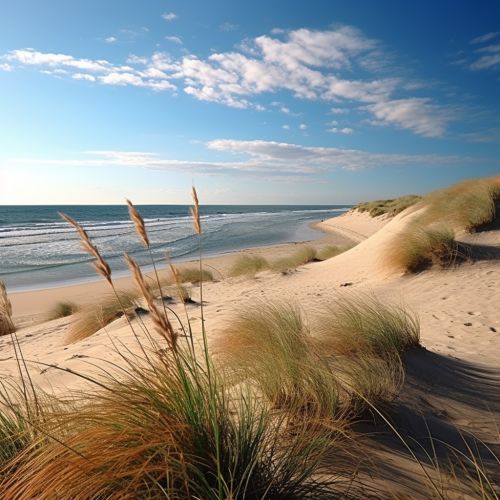Coastal Ecosystems
Overview
Coastal ecosystems are complex, dynamic and diverse natural systems found along the world's coastlines. They encompass a wide range of habitats, from sandy beaches and rocky shores to lagoons, mangrove forests, and coral reefs. These ecosystems play a crucial role in the planet's health, providing a range of ecosystem services that support human life and biodiversity.


Types of Coastal Ecosystems
Coastal ecosystems can be broadly categorized into three types: marine, estuarine, and terrestrial coastal ecosystems. Each of these types has unique characteristics and is home to a variety of plant and animal species.
Marine Coastal Ecosystems
Marine coastal ecosystems primarily include coral reefs, seagrass beds, and kelp forests. These ecosystems are among the most productive and biologically diverse on Earth.
Estuarine Coastal Ecosystems
Estuarine coastal ecosystems are transitional zones between land and sea, where freshwater from rivers mixes with saltwater from the ocean. They include salt marshes, mangrove forests, and tidal flats.
Terrestrial Coastal Ecosystems
Terrestrial coastal ecosystems are land-based and include beaches, dunes, and coastal cliffs. These ecosystems are shaped by the interaction of land and sea, and are often home to unique plant and animal communities.
Ecological Importance
Coastal ecosystems are of immense ecological importance. They serve as a buffer between land and sea, protecting the land from storm surges and erosion. They also play a critical role in nutrient cycling and carbon sequestration, helping to mitigate climate change. Furthermore, they provide habitat for a wide variety of species, many of which are endangered or threatened.
Threats to Coastal Ecosystems
Despite their importance, coastal ecosystems around the world are under threat. The main threats include climate change, pollution, overfishing, and habitat destruction due to urban development and agriculture. These threats can lead to a loss of biodiversity, changes in ecosystem function, and a reduction in the services these ecosystems provide.
Conservation Efforts
Conservation efforts for coastal ecosystems are focused on protecting and restoring these valuable habitats. This can involve a range of strategies, from establishing marine protected areas to implementing sustainable fishing practices and reducing pollution.
